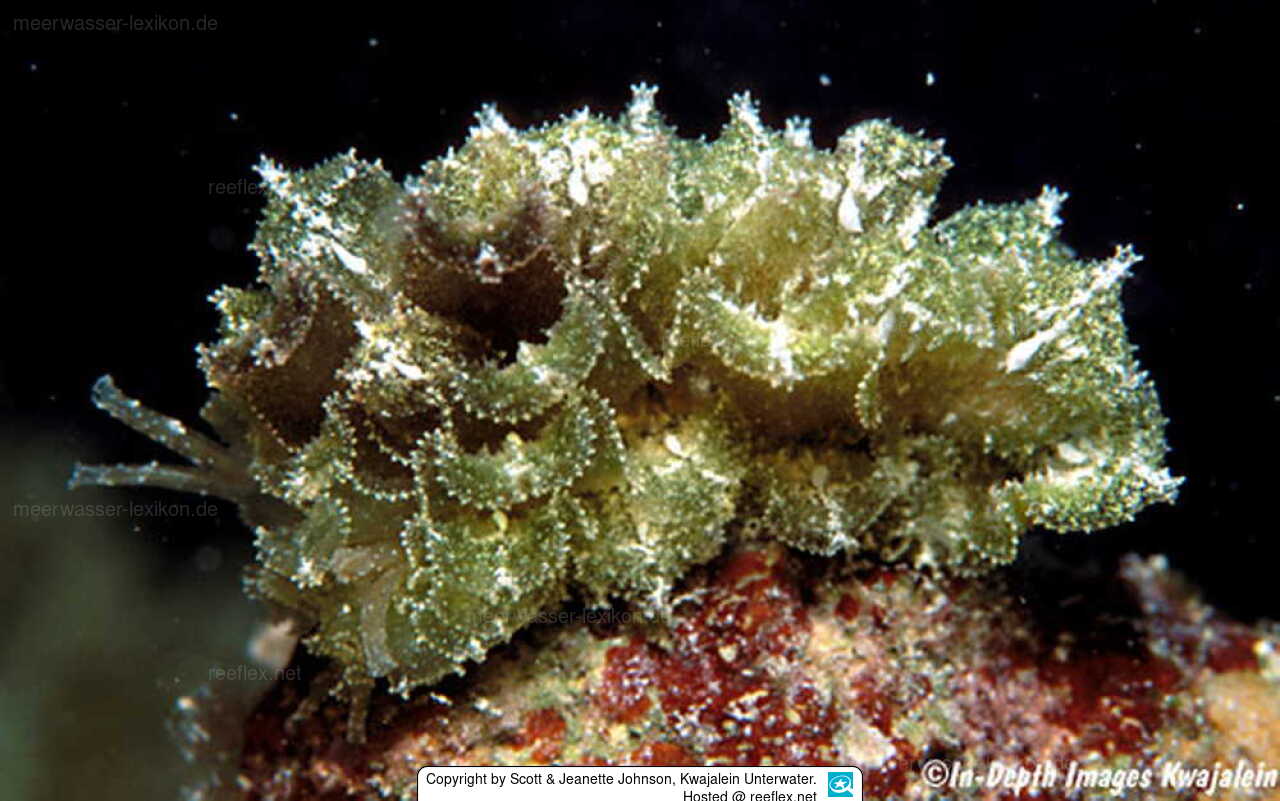Info
Polybranchia samanthae Medrano, Krug, Gosliner, Biju Kumar & Valdés, 2018
Polybranchia samanthae has broad, thin, leaf-like cerata with serrated edges. Color of Polybranchia samanthae variies from the green to a light brow. Cerata with finely papillate and often edged with white flecks. Head and rhinophores are tiped with white pigment.
It's a nocturnal species but can be found under rocks during the day. When disturbed can autotomize their central cerata and exude a rubber glue-like mucus.
Named in loving memory of the first author’s beloved niece, Samantha Solis (24 May 1992–13 June 1992).
Polybranchia samanthae has broad, thin, leaf-like cerata with serrated edges. Color of Polybranchia samanthae variies from the green to a light brow. Cerata with finely papillate and often edged with white flecks. Head and rhinophores are tiped with white pigment.
It's a nocturnal species but can be found under rocks during the day. When disturbed can autotomize their central cerata and exude a rubber glue-like mucus.
Named in loving memory of the first author’s beloved niece, Samantha Solis (24 May 1992–13 June 1992).







 Scott & Jeanette Johnson, Kwajalein Unterwater
Scott & Jeanette Johnson, Kwajalein Unterwater









